Best
Budget-Friendly Beginner Flute
-
Overall: "Donut" head joint for easy key access by smaller hands
-
Best Feature: Grip spots for good hand positioning
-
TedScore™: 7/10
Best
Student Flute Overall
-
Overall: Durable nickel silver body for clear, rich tone
-
Best Feature: Comfortable playing with offset G and E-mechanism
-
TedScore™: 9/10
Best
Durable Student
Flute
-
Overall: The nickel-silver body is durable and lightweight
-
Best Feature: The free-blowing head joint makes producing musical notes easier
-
TedScore™: 8/10
As a seasoned musician and expert in flute playing, I can assure you that learning the flute is a delightful adventure. It demands dedication but is no more daunting than other popular instruments.
But is the flute easy to learn?
With practice, you’ll conquer the challenge of producing the perfect sound. Once you grasp the basics, like breath control and fingering, progress comes quickly.
Unlike other instruments, the flute is kind to your body, smoothing the learning process.

I’ve performed captivating flute melodies in prestigious classical and jazz ensembles. As you delve into flute playing, you’ll discover a captivating array of techniques and a repertoire spanning classical, jazz, and world music.
Get ready for a wondrous musical journey with the flute!
Learning the Flute: Techniques and Challenges
Basic Techniques for Playing the Flute
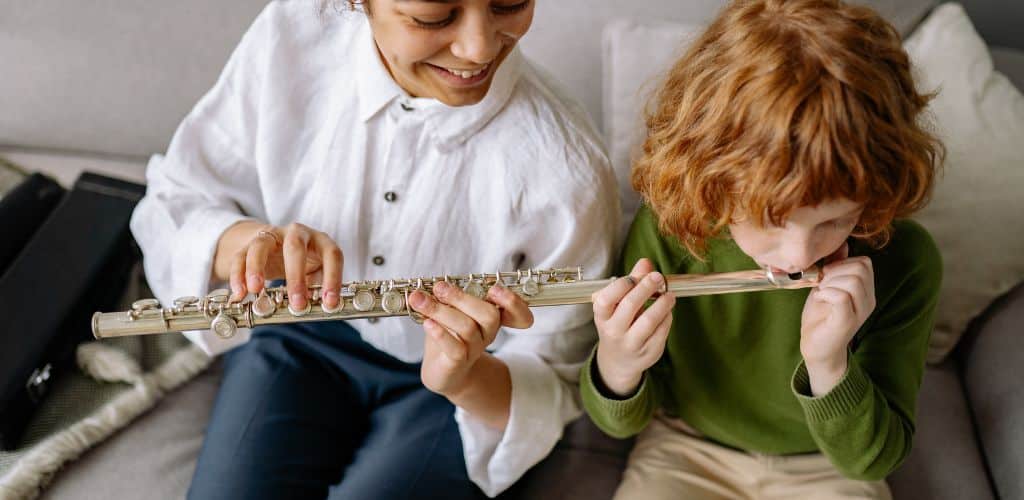
Embarking on your flute journey, the first milestone is mastering hand position and posture.
Your left-hand thumb stabilizes, and your fingers must find the correct keys without looking — like a dance of dexterity. Good posture is crucial, allowing you to breathe deeply and support your notes without strain.
Next is the embouchure, how you shape your mouth and lips to create sound. It’s akin to learning a secret handshake; the correct embouchure lets you produce clear and consistent notes.
Start with the head joint alone, focusing on directing the airstream across the lip plate to understand how subtle changes affect your sound.
Breath control is your invisible power, yet it often poses a challenge for beginners.
It’s about learning to shape your breath into music. Initial breath control problems are common, leading to squeaks or silence instead of music, but don’t fret — consistent practice will turn your breath into your best ally.
Common Challenges Faced by Beginners
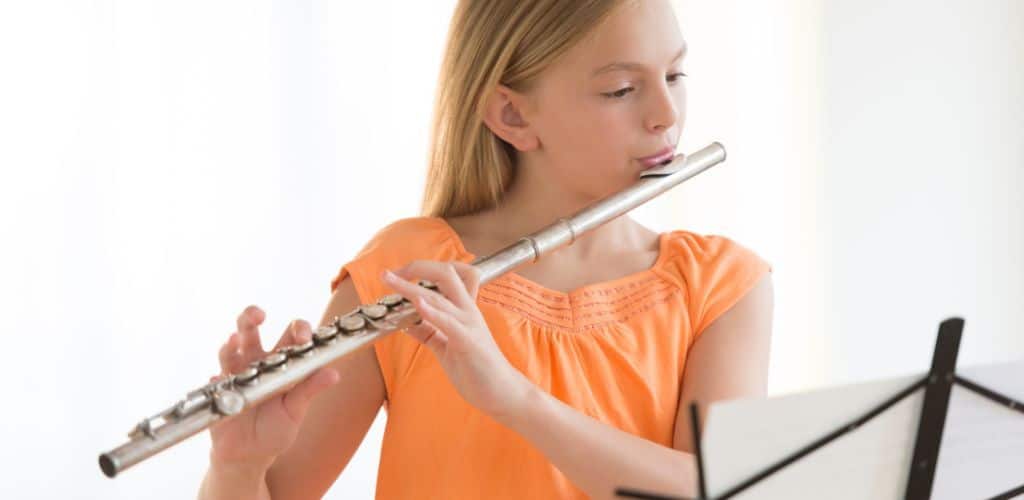
As a newcomer, you might face flute challenges like a pesky detective trying to crack a case.
First, embouchure fatigue; yes, your facial muscles will protest at first as they’re not used to this new workout since you have to blow air across the open embouchure hole.
Some days you might find your mouth shape refusing to cooperate. But just like any dedicated athlete, your endurance builds with time.
Fingering might look like a complicated code to crack, but it resembles the familiar patterns of a soprano recorder.
Early flute challenges include muscle fatigue and memorizing fingerings, but surprise — fingerings are logical, and muscle memory will soon be your hidden superpower.
Beginner flutes are forgiving, but learning resources are your toolkit for overcoming challenges. Whether structured lessons or tutorials, they help sharpen your skills and foster progress.
Yes, producing sound on the flute can be elusive, but once your fingers, breath, and learn flute embouchure align, your flute will sing, and so will your heart.
Remember, breath control problems and overcoming the first few hurdles are part of your quest.
Stay persistent and watch as the pieces fall into place, revealing the beauty of flute music crafted by your breath and hands.
Comparing the Flute to Other Instruments
Difficulty Level Compared to Other Instruments
The flute is a charming member of the woodwind family, often considered mid-tier in terms of difficulty.
Its sleek design lacks the reeds found in instruments like the clarinet or oboe, simplifying the initial learning curve—you won’t fuss over reeds when first starting.
Conversely, achieving a clear sound (“embouchure”) can be tricky and demands good breath control and practice.
Easier for beginners due to more straightforward air direction.
Typically more challenging given its dual reeds and delicate finger placement.
Often seen as simpler because of its basic fingering system and softer breath requirement.
A different beast with no breath control but intricate hand coordination.
The concert flute’s design with closed keys on student models helps you focus more on playing and less on finger gymnastics.
Mastering the first octave is your first milestone before soaring to those melodious heights that await further honed skills.
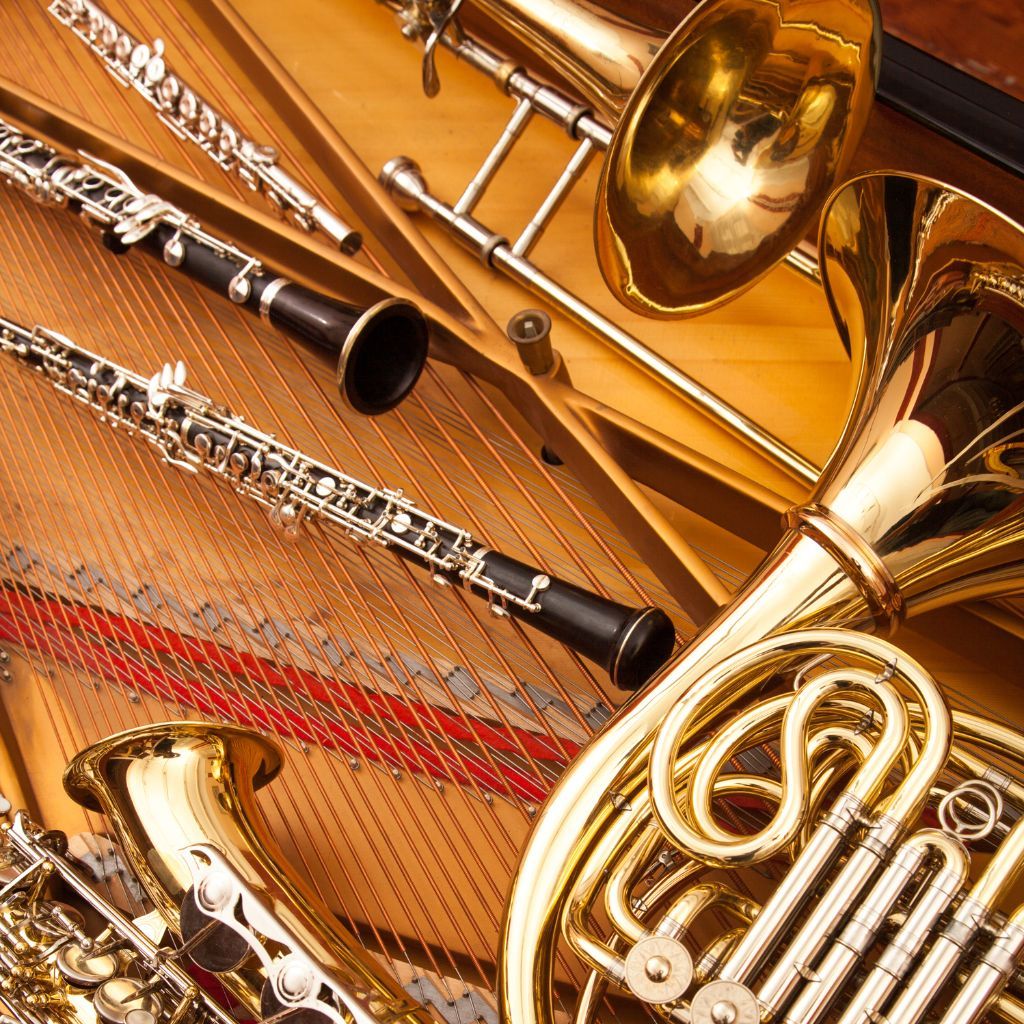
Advantages of
Learning the Flute
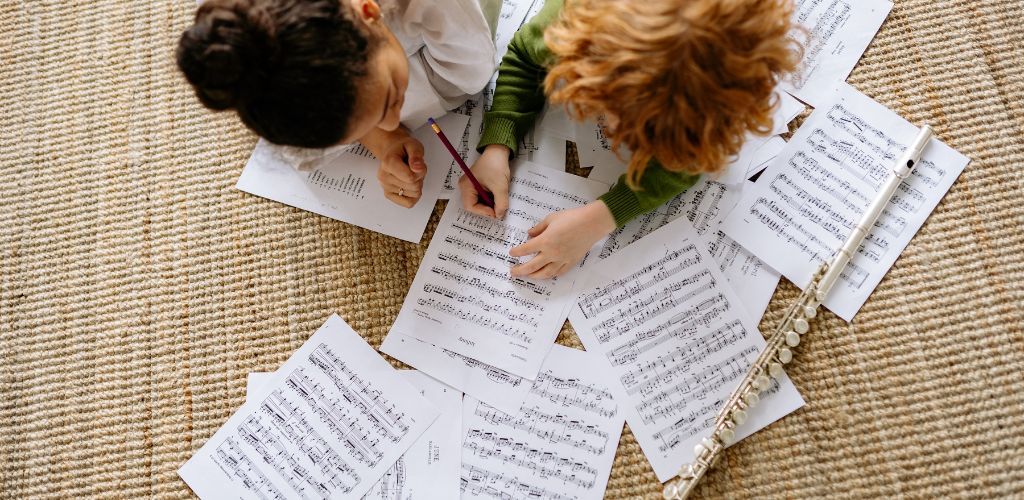
Now, let’s chat about why you might give the flute the nod over other musical instruments. Its lightweight, compact build means you can whisk it around without breaking a sweat—no heavy lifting required, which is a big thumbs up if you plan to join a band or orchestra.
Plus, the flute plays in concert pitch, making it a breeze to waltz into ensembles or play that catchy pop tune straight from the sheet music.
Weight: Flutes are light and portable; take your music on the go!
Versatility: Plays in concert pitch, allowing fuss-free collaboration with other instruments.
No Reeds: You get to bypass the hassle and cost of reeds, unlike with other woodwind instruments.
Whether you fancy a whimsical flute solo or jamming with fellow musicians in pitched perfection, the advantages of picking up the flute are as bright and clear as its sweet melodies.
Benefits of
Learning the Flute
Physical and Mental Benefits

- Breath Control & Lung Capacity
- Coordination & Dexterity
- Muscle Memory & Stamina
- Concentration & Cognitive Skills
Breath Control & Lung Capacity: Your lungs will thank you as they get a regular workout, improving your breathing techniques and expanding your lung capacity.
Coordination & Dexterity: Watch your fingers dance across the keys with growing finesse, enhancing hand-eye coordination and fine motor skills.
Muscle Memory & Stamina: Playing the flute builds muscle memory, especially in your fingers, back, arms, and palm. With time, you’ll notice increased physical stamina as you play longer pieces.
Concentration & Cognitive Skills: As you read music and translate it into fluid sound, you’re boosting your memory and focus, a mental exercise keeping your brain sharp and attentive.
Personal and Professional Growth Opportunities
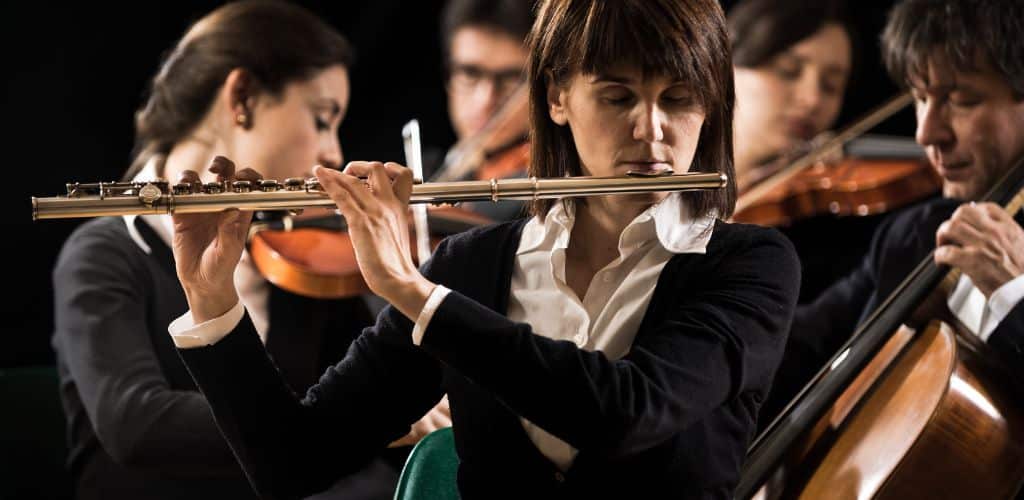
- Consistency & Discipline
- Avenues for Adults
- Professional Pathways
Consistency & Discipline: Mastering the flute is a testament to your dedication. The progress you achieve through regular practice can spill over into your personal and professional life, enhancing your ability to stick with tasks.
Avenues for Adults: No matter your age, it’s never too late to start. For adults, learning the flute can be a source of relaxation, an escape from the daily grind, and a joyful expression of personal growth.
Professional Pathways: If you dream of turning your music into a career, proficiency in the flute can open doors to performance opportunities and teaching positions. Cultivating your talent can lead to rewarding professional ventures.
Tips and Strategies for Beginners
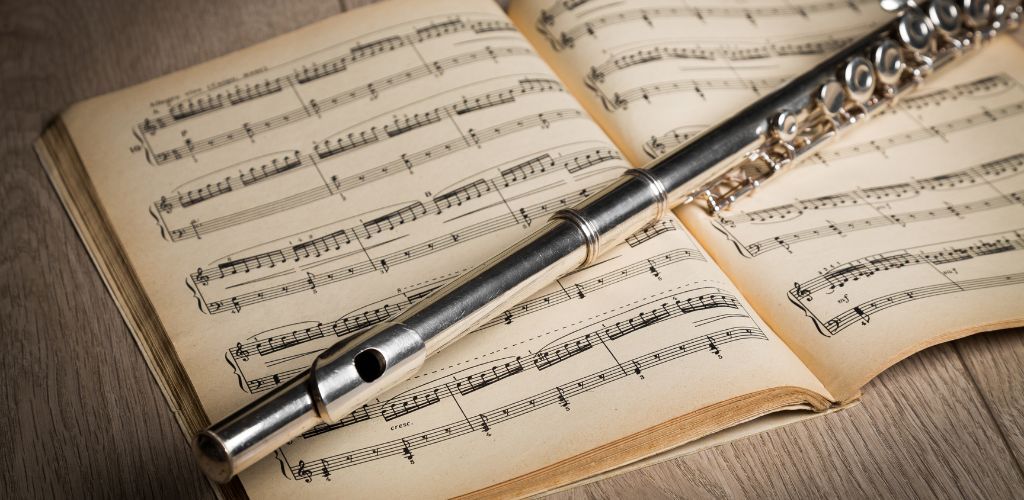
When starting, advice from seasoned flute instructors can be invaluable.
First and foremost, private lessons are a rich resource worth considering. Your tutor will offer targeted guidance, from refining your embouchure (how you shape your mouth to produce sound on a wind instrument) to mastering your fingerings.
-
Select a Flute Teacher: Choose someone who is patient and understanding, ideally with a style of teaching that resonates with you.
-
Utilize Learning Resources: Incorporate various flute books and online materials to broaden your understanding and technique.
Strategies for Overcoming Challenges
Playing the flute comes with obstacles, but you can overcome them effectively with the right strategies. Consistent practice is the cornerstone of progress. Make sure you:

Start small with a few notes and short melodies. This builds a foundation without overwhelming you.
Remember, every flutist’s journey is unique, and embracing your learning curve is part of the magic. Keep at it, and you’ll find your rhythm soaring through the enchanting world of flute music.
Our Recommended
Beginner Flutes
Here are some lovely choices known for reliability and great tone—super for a novice like you!
3 Flute Recommendations for Beginners
Yamaha YFL212 Student Model Flute
When I first got my hands on the Yamaha YFL212 – it was tailored for student players like me, offering quality sound and ease of play.
The split E mechanism made playing high notes a breeze, and the offset G key provided enhanced comfort, especially for my smaller hands. Finding an instrument to keep up with every practice session without compromising playability is a relief!
Yamaha YFL212 Student Model Flute
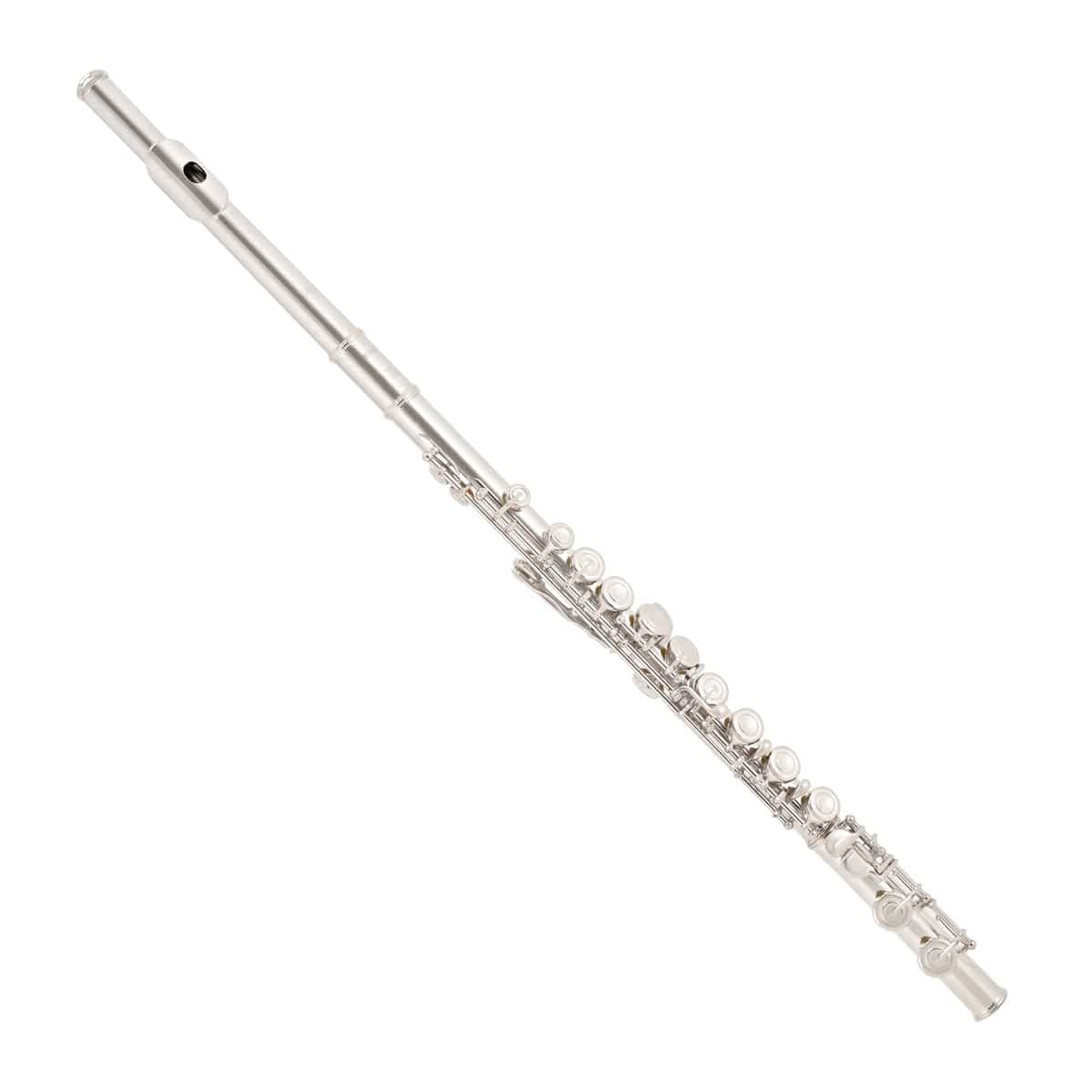
DESIGNED FOR: beginner flute players
FEATURES: Has a responsive sound with superb intonation
OTHER INFO: The flute's body is built with nickel silver for durability, producing a clear, rich tone
Yamaha YFL212 Student Model Flute
- Offers comfortable playing with offset G and E-mechanism
- Ideal for students seeking to develop their skills
- Offers a 5-year extended warranty and 3-month Tomplay Premium
- Includes a maintenance kit, hard case and soft cover
- Quite expensive compared to other beginner flute brands
When you click ‘Check Price’, you’ll see there are loads of great places to buy this item. Our personal favorite is Sweetwater for the US, and Thomann and Gear4Music for the UK & Europe.
They are the largest music retailers, with excellent customer service, competitive prices, really fast shipping, and the longest guarantees.
The professional musician who wrote this article combined many things,
from the product build, manufacturer’s reputation through to feedback
from other users, to create our famous TedScore™.
Nuvo jFlute 2.0
I was impressed by jFlute’s distinctive and inventive design, tailored for effortless playability and a lightweight feel. While it may not offer the rich sound quality of higher-end flutes, its ease of play makes it a great choice for beginners or students on the go.
Nuvo jFlute 2.0 Outfit
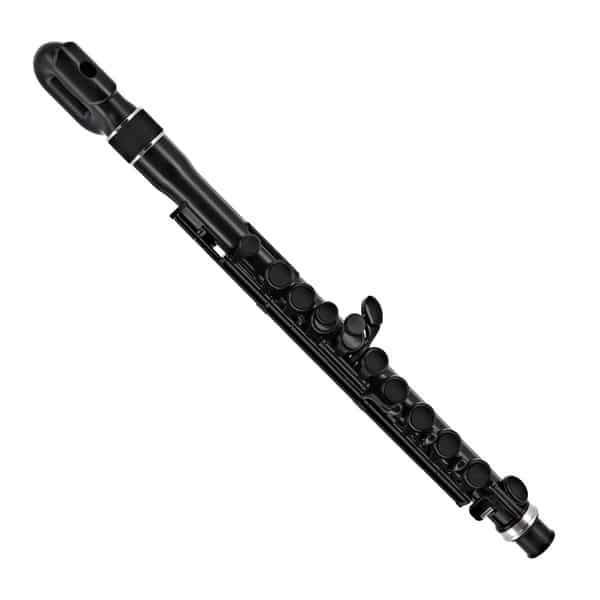
FEATURES: Innovative "Donut" head joint for effortless key access by smaller hands
OTHER INFO: Features grip spots for optimal hand positioning
- Crafted from durable ABS resin for longevity
- Designed with waterproof features for hassle-free maintenance
- Appropriate for all ages and skill levels
- Comes with a comprehensive beginner's kit
- Offered in an array of lively colors
- Produces a distinctively rich sound unlike metal flutes
When you click ‘Check Price’, you’ll see there are loads of great places to buy this item. Our personal favorite is Sweetwater for the US, and Thomann and Gear4Music for the UK & Europe.
They are the largest music retailers, with excellent customer service, competitive prices, really fast shipping, and the longest guarantees.
The professional musician who wrote this article combined many things,
from the product build, manufacturer’s reputation through to feedback
from other users, to create our famous TedScore™.
Trevor James TJ5X Student Flute
When I tried the Trevor James TJ5X, I was impressed by its silver-plated head, body, and foot joints, which delivered a bright and clear tone, solidifying its place as one of my top picks!
The split E mechanism for playing high notes at large intervals and the offset G key for enhanced comfort for smaller hands were standout features.
Trevor James TJ5X Student Flute

DESIGNED FOR: beginners and intermediate players
FEATURES: The nickel-silver body is both sturdy and lightweight
OTHER INFO: The free-blowing head joint facilitates easier note production
Trevor James TJ5X Student Flute
- It provides an ergonomic playing experience with an offset G and split E mechanism
- Comes with a purple-lined wooden case and black, fleece-lined cover
- Delivers exceptional value and undergoes meticulous quality control
- May not meet the needs of advanced players seeking higher-quality
When you click ‘Check Price’, you’ll see there are loads of great places to buy this item. Our personal favorite is Sweetwater for the US, and Thomann and Gear4Music for the UK & Europe.
They are the largest music retailers, with excellent customer service, competitive prices, really fast shipping, and the longest guarantees.
The professional musician who wrote this article combined many things,
from the product build, manufacturer’s reputation through to feedback
from other users, to create our famous TedScore™.
Is The Flute Easy To Learn:
Final Thoughts
Congratulations on considering the flute – it’s a fantastic choice!
Mastering the embouchure and fingerings may seem tricky at first, but with practice, you’ll be belting out beautiful tunes in no time.
Whether you’re drawn to its classical charm or global heritage, the flute is your ticket to a world of musical expression. So take a deep breath, stand tall, and let your fingers dance. You’ve got this!
With a sprinkle of persistence and a dash of enthusiasm, the flute might just become the delightfully tuneful voice of your soul. Keep those tunes flowing!
By the way, when you’re ready to buy your first flute, check out the next article for more top picks and some insights on pricing!
FAQ's
The time it takes to learn the flute varies for each person, depending on practice and dedication. Most people can make significant progress on a musical instrument within a year of regular practice with consistent effort.
Learning the flute on your own is possible with dedication and consistent practice, especially now that anyone can learn the flute online. However, having guidance from a teacher can greatly enhance the learning process and help avoid developing bad habits. It’s important to stay motivated and seek resources that provide structured learning and feedback to ensure steady progress.
The difficulty of learning the flute or clarinet varies for each individual, as both instruments have unique challenges. Some may find the flute hard to learn because of the embouchure and breath control, while others may find the clarinet’s fingerings more challenging.
The difficulty of learning the flute or guitar depends on individual preferences and prior musical experience. While mastering the guitar involves complex finger placements and strumming techniques, the flute requires breath control and precise fingerings, making it a unique challenge for each learner.



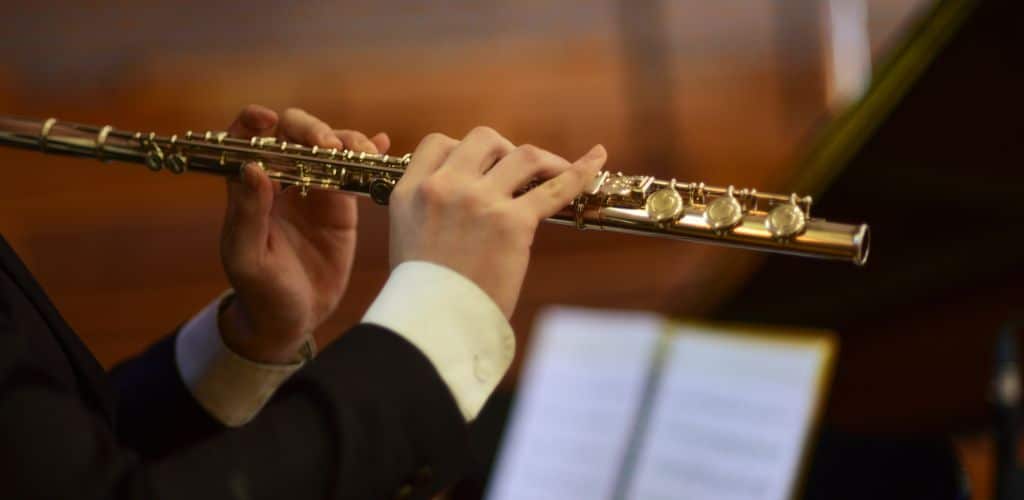










Fascinating read! The flute’s ability to convey a wide range of emotions through its tones always intrigued me. It’s heartening to see the benefits of learning the flute laid out so comprehensively. Makes me wish to dedicate more time to practice. Chloë’s insights into the physical and mental benefits are especially motivating. Would love to connect with fellow enthusiasts who are on the same journey.
sick article, makes me wanna start the flute asap!
Regarding the comparison to other instruments – I’ve found that while the finger placement and breath control of the flute present initial challenges, its learning curve is not as steep as for stringed instruments like the violin or cello. That being said, each instrument brings its unique set of challenges, and mastery requires dedication regardless. Would be interesting to see Chloë take on this perspective.
hey all! just started with the flute and saw this article. You think the Yamaha YFL212 is a good start for someone totally new? never played an instrument before, so kinda nervous about choosing the right one. also, props to Chloë Vincent for the clear breakdown.
is it really ok for kids? my daughter’s 10 and wants to start flute.
Yamaha YFL212 is a solid choice for beginners. Easy to handle and durable. You’ll be off to a great start with it!